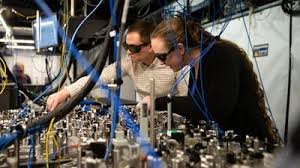The Future of Sustainable Tech: Innovations in Green Technology and Their Role in Combating Climate Change

As the effects of climate change become increasingly apparent, the role of sustainable technology in mitigating environmental impact has never been more crucial. Innovations in green technology are driving a transformative shift towards a more sustainable future. This article explores the cutting-edge developments in sustainable tech, highlighting their potential to combat climate change and shape a greener world.
Advancements in Renewable Energy Technologies
Renewable energy technologies are at the forefront of the green tech revolution. Significant advancements are being made in solar, wind, and hydroelectric power, making these sources of energy more efficient and accessible than ever before.
1. Solar Power Innovations:
Recent innovations in solar technology are enhancing efficiency and reducing costs. Advances such as perovskite solar cells, which promise higher efficiency and lower production costs compared to traditional silicon-based cells, are paving the way for more widespread adoption. Additionally, the development of solar panel coatings that increase light absorption and durability is making solar energy a more viable option for a variety of applications, from residential rooftops to large-scale solar farms.
2. Wind Energy Enhancements:
In the wind energy sector, technological advancements are increasing the efficiency and power output of wind turbines. New designs, such as vertical-axis wind turbines and larger, more powerful horizontal-axis turbines, are optimizing energy capture. Innovations in materials and manufacturing processes are also extending the lifespan of wind turbines and reducing maintenance costs, further boosting the viability of wind power as a primary energy source.
3. Hydro and Ocean Energy:
Hydroelectric power continues to be a reliable source of renewable energy, but recent developments in small-scale hydro and ocean energy technologies are expanding its potential. Innovations in tidal and wave energy harness the kinetic energy of ocean currents and waves, providing a consistent and predictable energy source. These technologies are particularly promising for coastal and island communities, where traditional renewable energy sources may be less effective.
The Rise of Sustainable Transportation Solutions
Transportation is a major contributor to greenhouse gas emissions, but new green technologies are revolutionizing the industry and promoting more sustainable practices.
1. Electric Vehicles (EVs):
Electric vehicles are rapidly gaining popularity as a cleaner alternative to conventional gasoline-powered cars. Recent advancements in battery technology, such as solid-state batteries, are addressing issues related to range, charging time, and overall performance. The expansion of EV charging infrastructure and the introduction of more affordable electric vehicle models are making EVs a practical option for a broader audience.
2. Hydrogen Fuel Cells:
Hydrogen fuel cell technology is another promising solution for reducing transportation emissions. Unlike battery-powered EVs, hydrogen fuel cells generate electricity through a chemical reaction between hydrogen and oxygen, with the only byproduct being water. Recent developments in hydrogen production, storage, and distribution are improving the feasibility of hydrogen as a clean energy source for both vehicles and industrial applications.
3. Sustainable Aviation:
The aviation industry is also making strides towards sustainability. Innovations in aircraft design, such as more aerodynamic structures and lightweight materials, are enhancing fuel efficiency. Additionally, the development of sustainable aviation fuels (SAFs) derived from renewable sources offers the potential to significantly reduce carbon emissions from air travel. Efforts to electrify short-haul flights and explore hybrid-electric propulsion systems are also on the horizon.
Green Tech in Building and Urban Planning
The integration of green technology in building design and urban planning is crucial for creating sustainable cities and reducing overall environmental impact.
1. Smart Building Technologies:
Smart building technologies, including energy management systems and advanced heating, ventilation, and air conditioning (HVAC) systems, are optimizing energy use in commercial and residential buildings. These systems use sensors and data analytics to monitor and adjust energy consumption, leading to significant reductions in energy waste and costs.
2. Green Building Materials:
The use of sustainable building materials is gaining traction as architects and builders seek to minimize the environmental impact of construction. Innovations in materials, such as recycled or upcycled products and low-impact alternatives like bamboo and rammed earth, are reducing the carbon footprint of new buildings. Additionally, technologies such as green roofs and living walls are improving building insulation and air quality.
3. Urban Green Infrastructure:
Urban planning is increasingly incorporating green infrastructure to enhance sustainability and resilience. Green roofs, urban forests, and permeable pavements are being integrated into city landscapes to manage stormwater, reduce urban heat islands, and promote biodiversity. These solutions not only contribute to climate change mitigation but also improve the quality of life for urban residents.
Conclusion
The future of sustainable tech is brimming with innovative solutions that hold the potential to significantly impact climate change and drive environmental stewardship. From advancements in renewable energy and sustainable transportation to green building practices and urban planning, these technologies are collectively shaping a more sustainable and resilient future. As we continue to embrace and develop these green innovations, the path toward combating climate change becomes clearer, offering hope for a healthier planet for generations to come.







